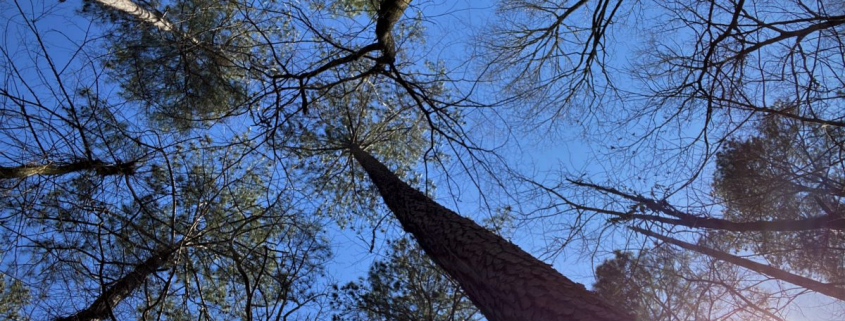A Different Perspective on the Early March Forests at Wheeler National Wildlife Refuge
March 7, 2021, I once again visited the bottomland forests on the eastern end of Wheeler National Wildlife Refuge. I’ve begun to focus my attention during my wanderings more and more on the forest canopy, the photosynthesis engines of our incredible terrestrial ecosystems. I’ve discovered that my iPhone’s “selfie function” serves a purpose far more valuable than taking my own mug shot. I reverse the shutter direction, hold the phone horizontally at waist level, extend my arm far enough to remove my cap’s bill from the image, and snap a photo vertically of the crown above me. The images are pure magic; here’s one among others that I’ll reflect on later in this Blog Post.
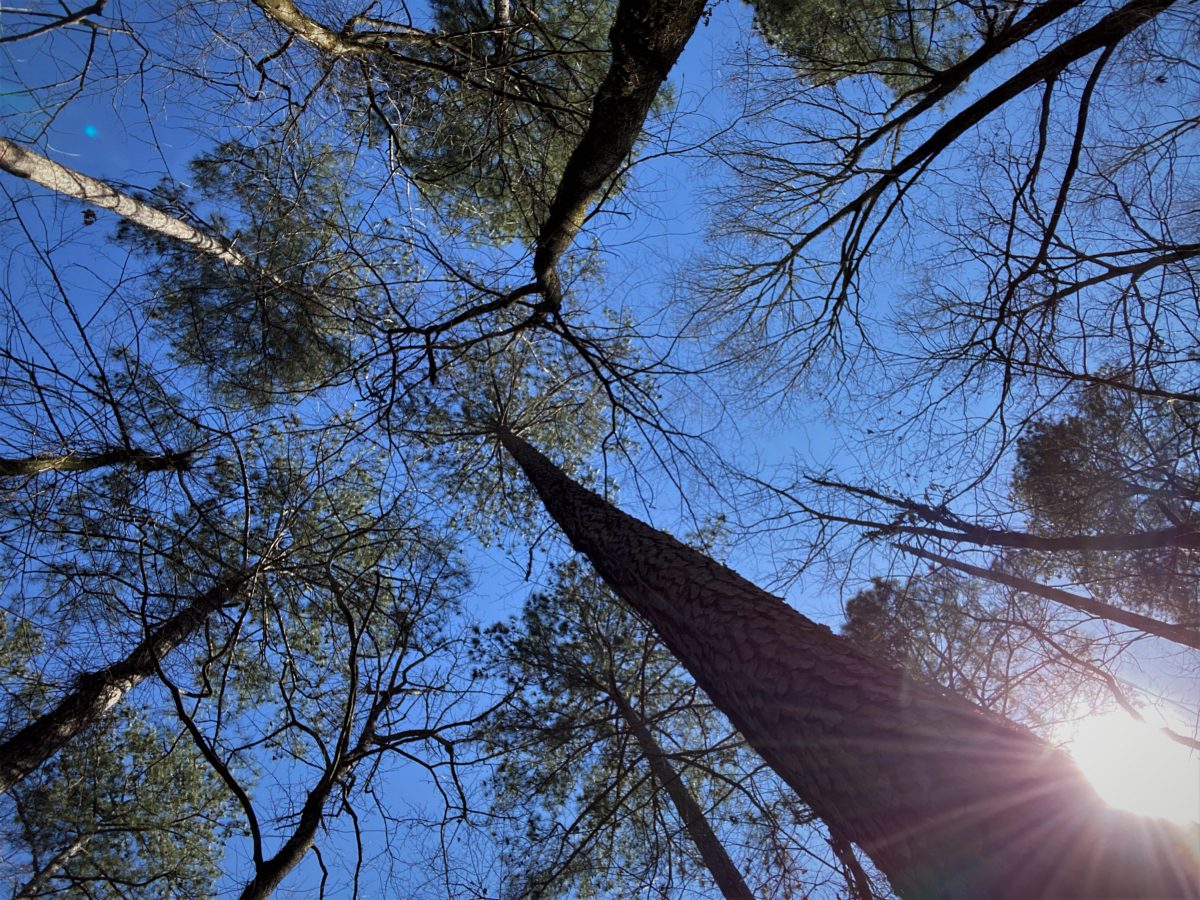
Look for more such images as I continue my forest wanderings. I’m finding glee, inspiration, and magic by gazing above. Each image stirs me to think deeply about Nature’s art, as well as the science of my forestry and applied ecology disciplinary roots.
View from the Tennessee River
I wandered that day west of the bottomland forest onto a causeway from where I photographed the forest profile to the west across fields intentionally winter-flooded for migratory waterfowl.
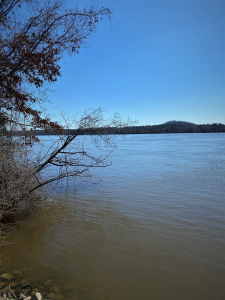
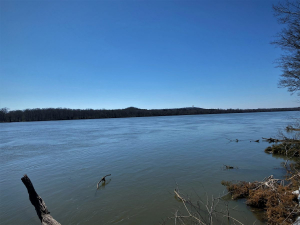
Here’s the nearer forest northeast and southeast of where I stood, providing a similar and closer profile of the forest where I captured the many crown images deeper in this Blog Post. Although the images belie the reality, these forests contain dominant trees reaching heights in excess of 100 feet.
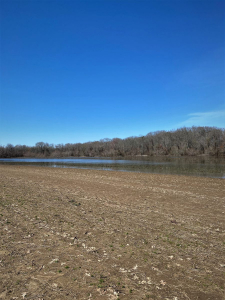
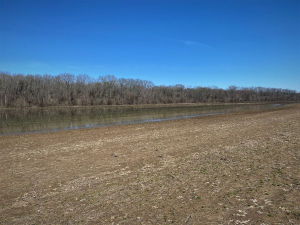
This image of a strip of bottomland hardwoods, drawn in with the telephoto function, gives a truer representation of vertical scale.
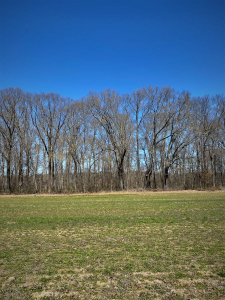
The Hardwood Bottomland Forest Up Close
All but the most elevated sites within the bottomland forests retain some surface water this time of year. This is typical inundation; most areas I can explore without encountering depths greater than 3-6 inches.
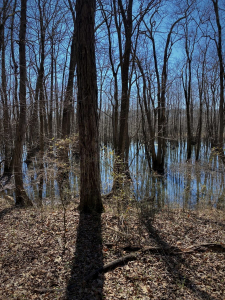
I swung the camera at the same photo point first to 30 degrees (below left), then to 60 degrees, placing the afternoon sun behind the tree’s upper bole. The crown architecture varies by species. Merriam-Webster defines dendritic as resembling or having dendrites, that is, branching like a tree. Dendritic is a common pattern employed by Nature for gathering, whether it’s the tree accessing sunlight in the canopy, tree roots exploiting the soil below ground for its bounty of moisture, nutrients, and aeration, or animal nervous systems feeding information to our brain, or our circulatory system returning blood to the heart, or a stream network collecting water into trickles, runs, creeks, and rivers, routing surface flow to the oceans. The dendritic network system functions well enough that Nature has universally adopted it, and dictionary writers have used tree branching to define the term.
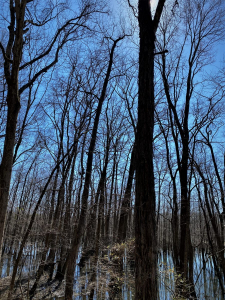
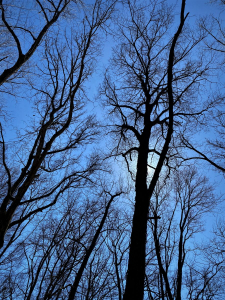
I see poetry, art, and a spirit-presence in the tree-top backlit by the sun (above right). I observe often in these Posts that I prefer Nature paintings that look like the real thing, and I see no better artwork than Nature’s own images (photographs that remind me of artwork). I would hang the image above right, properly matted and framed, on my office wall!
A New Perspective: A Growing Fascination with the Canopy
The power of my new-found discovery of the forest canopy is what now directs my attention into the canopy above me as I explore the forest realm. I realize that the canopy exploration season will pause with full leaf-out. I am drafting these words April 10, a time of rapid foliation. I am trying to squeeze leafless canopy appreciation into these final 7-10 days before the show ends. Yes, I will continue to gaze vertically during the growing season, but I expect relative disappointment. Regardless, I promise to report back to you as the growing season unfolds. Although the water-saturated site above is common within the hardwood bottoms, I am devoting the remainder of these photos to an upland (perhaps five elevation feet higher), better-drained, loblolly pine-dominated stand.
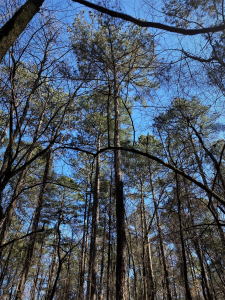
Here’s the 60-degree view into the crowns reaching 100-plus feet into the heavens.
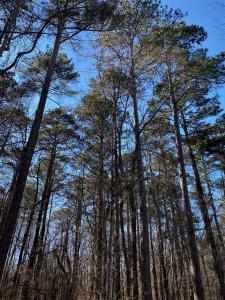
And, the vertical views below peer up and into a pine-dominated, stand of loblolly and mixed hardwoods. Note that the individual pine crowns do not touch their neighbors, in contrast to the more common conception that the entire canopy is a vast network of overlapping and interlacing branches. The hardwood branches that from this perspective appear interlaced are, instead, sub-dominant canopy hardwoods below the dominant pine crowns.
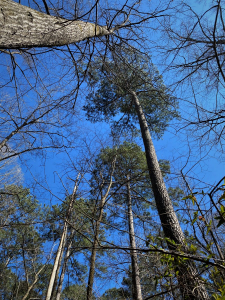
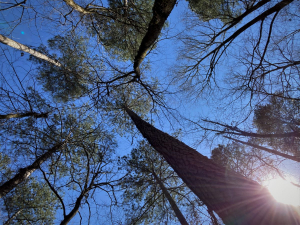
I plan to study crown structure more intensely next fall and winter. In the meantime I’ll begin discerning what I can of our fully-foliated summer forests.
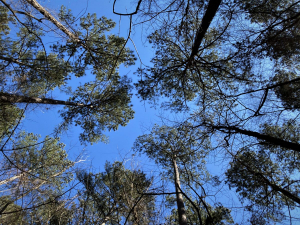
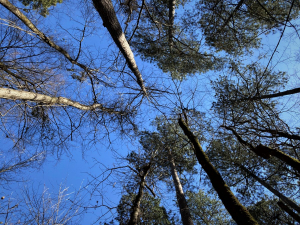
I decided to isolate a single nearly two-foot diameter loblolly, among the larger individuals, and shoot up along its high-reaching trunk, which supports the crown far above. This view typifies what the forestry field terms crown shyness. Its extended branches simply do not touch the adjacent pine neighbors. The trees demand reasonable social distancing. To be clear, the trees are practicing what has been genetically hard-wired into them. If the adjacent crowns interlaced across this boundary, any stem-bole wind-bowing and rocking would result in branch/foliage friction, wounding, and breaking.
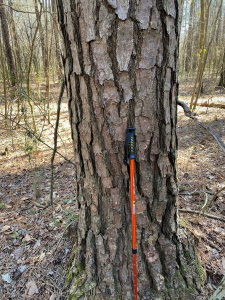
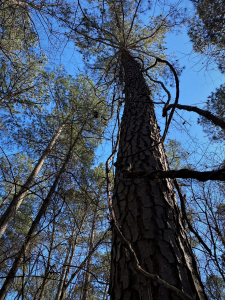
Bear with me as I deepen my knowledge and understanding through observation and digging into the literature.
Another Tree Story
I often observe in these Posts that every tree (and every stand and forest parcel) has a story to tell. This oak earlier in its life forked within a foot of the ground. Two or three decades ago, the fork nearer to the camera broke away leaving a wound where the twin severed from the remaining stem. The twin snapped long enough ago that no decaying evidence of it is evident on the ground nearby. Since the event, the surviving stem has slowly calloused over the wound. Within another decade or so, the visible hole will have healed over, likely leaving a base hollowed from decay introduced at the time of breakage.
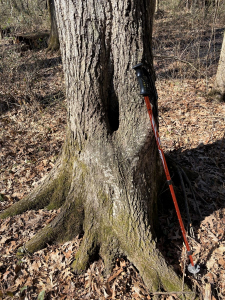
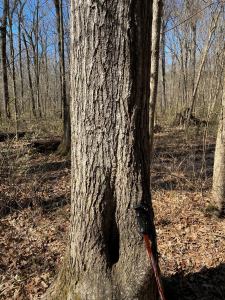
Spring Emerges
This spring beauty, one of earliest spring ephemerals, greeted me March 7, marking for me the first unofficial day of the season!
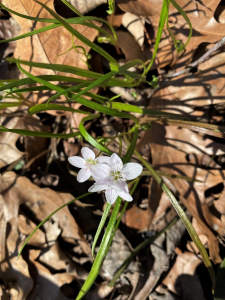
Thoughts and Reflections
I offer three observations from my early March trek through the bottomland forest:
- The forest’s visible action occurs high above us.
- Her invisible dynamism lies beneath our feet in the soil.
- The forest is a living miracle of science and beauty.
Inhale and absorb Nature’s elixir. May Nature Inspire, Inform, and Reward you!
Note: All blog post images created & photographed by Stephen B. Jones unless otherwise noted. Please circulate images with photo credit: “©2021 Steve Jones, Great Blue Heron LLC. All Rights Reserved.”
Another Note: If you came to this post via a Facebook posting or by an another route, please sign up now (no cost… no obligation) to receive my Blog Post email alerts: http://eepurl.com/cKLJdL
And a Third: I am available for Nature-Inspired Speaking, Writing, and Consulting — contact me at steve.jones.0524@gmail.com
Reminder of my Personal and Professional Purpose, Passion, and Cause
If only more of us viewed our precious environment through the filters I employ. If only my mission and vision could be multiplied untold orders of magnitude:
Mission: Employ writing and speaking to educate, inspire, and enable readers and listeners to understand, appreciate, and enjoy Nature… and accept and practice Earth Stewardship.
Vision:
- People of all ages will pay greater attention to and engage more regularly with Nature… and will accept and practice informed and responsible Earth Stewardship.
- They will see their relationship to our natural world with new eyes… and will understand more clearly their Earth home.
Tagline/Motto: Steve (Great Blue Heron) encourages and seeks a better tomorrow through Nature-Inspired Living!
Steve’s Three Books
I wrote my books Nature Based Leadership (2016), Nature-Inspired Learning and Leading (2017), and Weaned Seals and Snowy Summits: Stories of Passion for Place and Everyday Nature (2019; co-authored with Dr. Jennifer Wilhoit) to encourage all citizens to recognize and appreciate that every lesson for living, learning, serving, and leading is either written indelibly in or is powerfully inspired by Nature.
I began writing books and Posts for several reasons:
- I love hiking and exploring in Nature
- I see images I want to (and do) capture with my trusty iPhone camera
- I enjoy explaining those images — an educator at heart
- I don’t play golf!
- I actually do love writing — it’s the hobby I never needed when my career consumed me
- Judy suggested my writing is in large measure my legacy to our two kids, our five grand kids, and all the unborn generations beyond
- And finally, perhaps my books and Blogs could reach beyond family and touch a few other lives… sow some seeds for the future


All three of my books (Nature Based Leadership; Nature-Inspired Learning and Leading; Weaned Seals and Snowy Summits) present compilations of personal experiences expressing my (and co-author Dr. Wilhoit for Weaned Seals and Snowy Summits) deep passion for Nature. All three books offer observations and reflections on my relationship to the natural world… and the broader implications for society. Order any and all from your local indie bookstore, or find them on IndieBound or other online sources such as Amazon and LifeRich.

